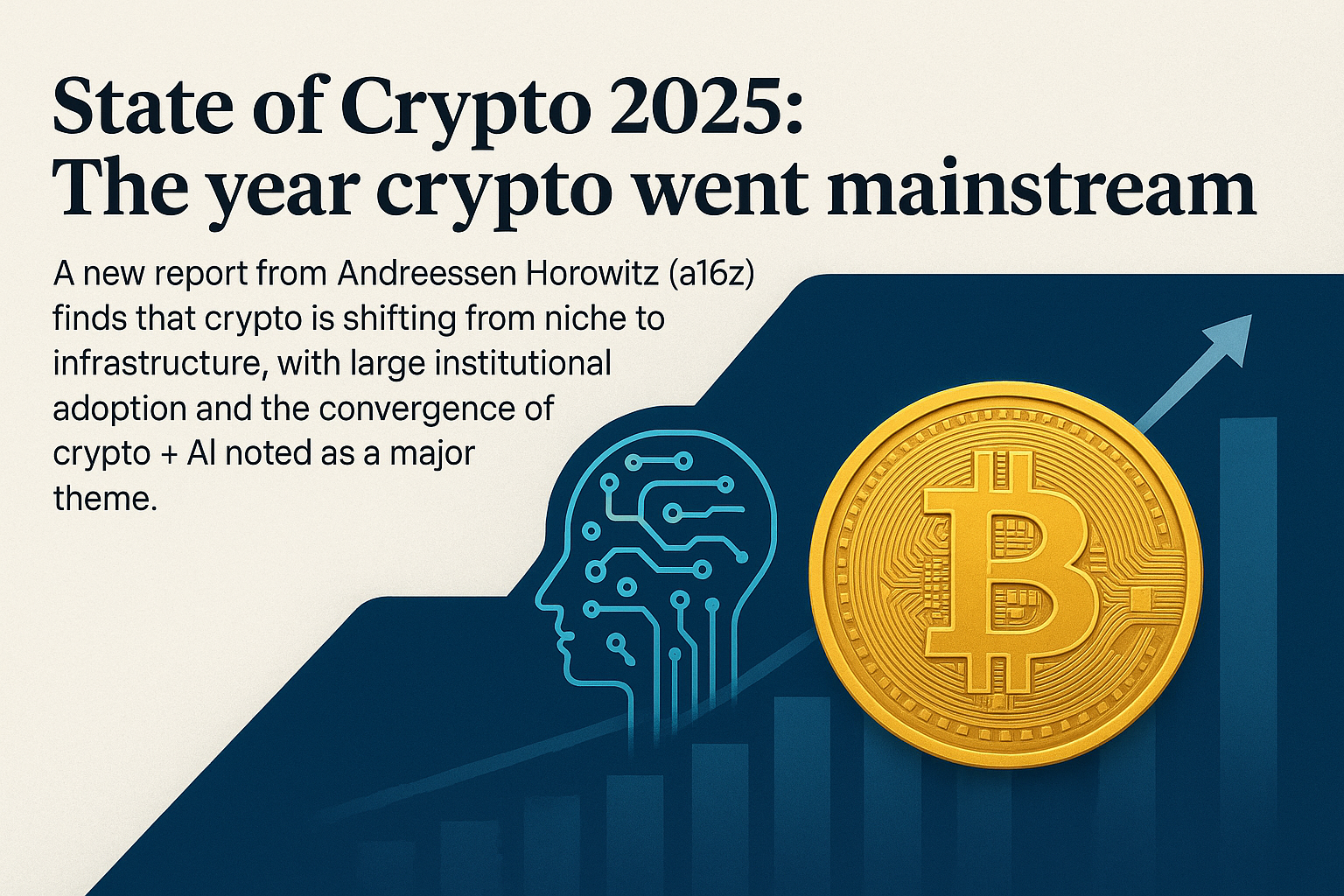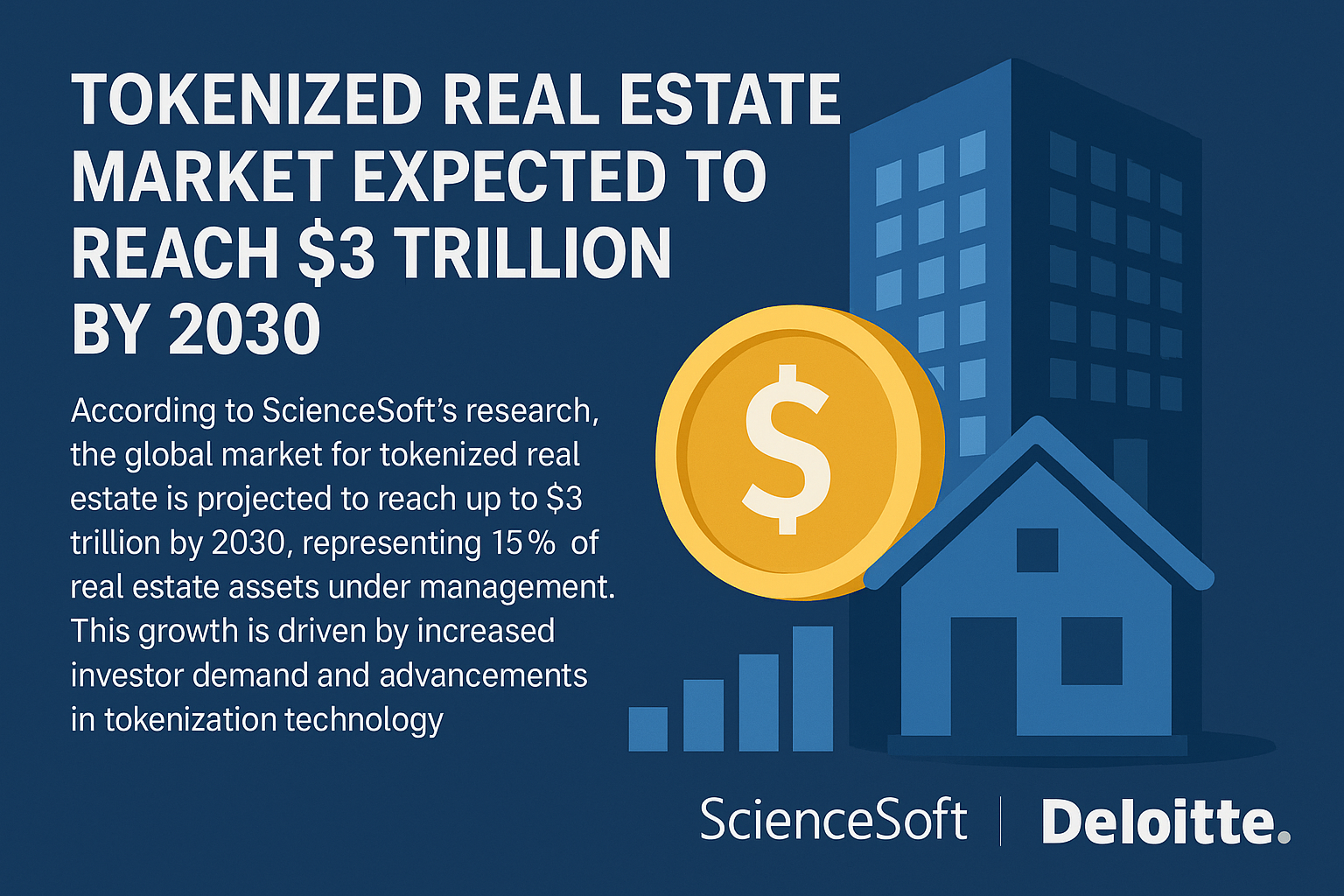2025 will be remembered as the year crypto finally broke free from its speculative image and cemented itself as a core layer of global financial and technological infrastructure. According to the new State of Crypto 2025 report from Andreessen Horowitz (a16z), the industry has entered a new phase: one where blockchain technology underpins real-world systems, institutions adopt crypto at scale, and the long-discussed convergence between AI and crypto becomes a tangible reality.
From Speculation to Infrastructure
For over a decade, crypto was seen primarily as a playground for traders, developers, and early adopters. But 2025 marks a turning point. The a16z report shows that blockchain networks have evolved from experimental ecosystems into essential infrastructure powering payments, identity, and data systems worldwide. Governments, banks, and tech giants are no longer standing on the sidelines — they’re building directly on blockchain.
Tokenized assets, on-chain finance, and digital identity protocols are now integrated into mainstream services. Central banks are collaborating with private sector innovators, and enterprise-grade blockchains are supporting trillions in transaction volume annually. What was once “the future” is now the present.
Institutional Adoption and the Rise of On-Chain Finance
The institutional wave that began with Bitcoin ETFs in the early 2020s has now matured into a full-blown movement. Asset managers, insurers, and pension funds are all experimenting with tokenized portfolios and blockchain-based settlement systems.
The result: faster, cheaper, and more transparent markets.
But institutions aren’t just investing in crypto — they’re investing with crypto. Decentralized finance (DeFi) platforms are evolving to meet compliance standards, bridging the gap between on-chain liquidity and traditional capital markets. According to a16z, over 40% of institutional transactions now touch blockchain in some form, from smart contracts managing trade finance to digital bond issuance.
The AI + Crypto Convergence
Perhaps the most transformative trend highlighted by a16z is the fusion of artificial intelligence and crypto. AI agents are now interacting directly with blockchain networks, earning, spending, and verifying transactions autonomously.
This synergy creates new economic models: decentralized AI marketplaces, verifiable model training on-chain, and tokenized data economies.
AI’s need for transparency and auditability naturally aligns with blockchain’s strengths. By anchoring AI processes to public ledgers, companies can prove how models are trained and how data is used — a breakthrough for both ethics and trust in automation.
User Experience and the Invisible Crypto Layer
Another sign of mainstream adoption is that users often don’t even realize they’re using crypto. The blockchain layer has become invisible — powering apps, wallets, and games seamlessly integrated into daily life.
Stablecoins are now a standard payment option across major e-commerce platforms. Web3 social networks rival traditional platforms, rewarding creators directly and offering transparent ownership of digital assets.
In short: crypto is no longer a separate industry. It’s a layer of the internet itself.
Policy, Regulation, and Global Momentum
Clearer regulatory frameworks across the U.S., EU, and Asia have accelerated adoption. While challenges remain — especially around privacy and interoperability — governments now view blockchain as a national strategic priority rather than a threat.
This alignment between innovation and policy is fueling massive growth. Startups are scaling faster than ever, enterprise investment is booming, and developer activity across blockchain ecosystems continues to hit all-time highs.
The Infrastructure Era
Crypto in 2025 isn’t about hype cycles or speculative mania. It’s about infrastructure, integration, and intelligence. With AI and blockchain now interwoven, and with institutions fully on board, the ecosystem has matured into a fundamental pillar of the digital economy.
Andreessen Horowitz’s report captures it perfectly: “Crypto has moved from niche to necessity.”
The decentralized era is no longer coming — it’s here.




